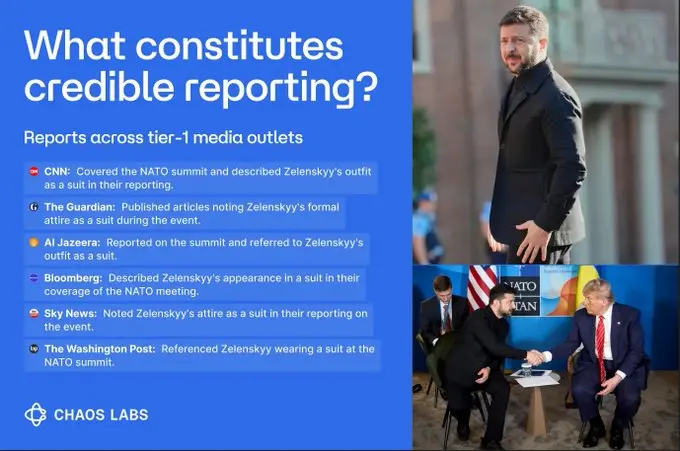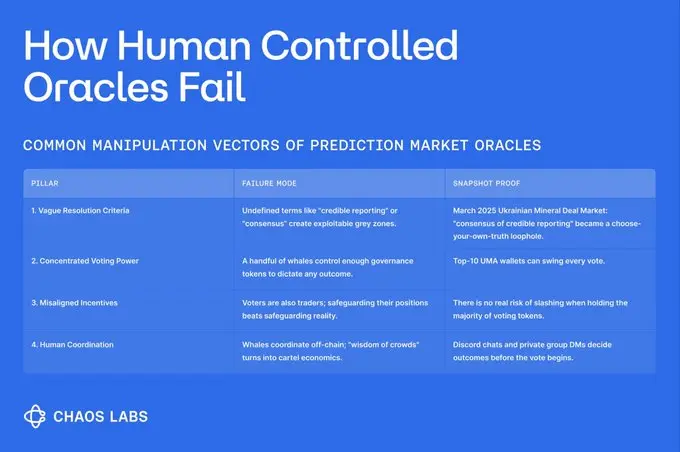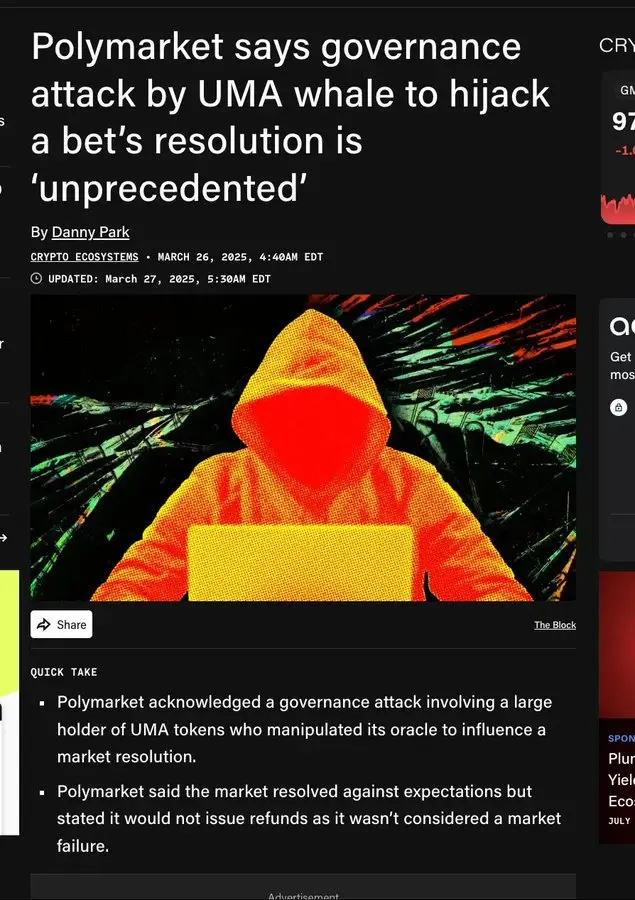Author: Omer Goldberg
Translation: Tim, PANews
The controversy surrounding the Zelensky suit incident on Polymarket is not a system failure. It is a $200 million case that reveals a fundamental flaw in human-controlled oracles: when the cost of corruption is lower than the reward, facts become commodities purchased by the highest bidder.
Zelensky's $200 Million Fashion Show

Imagine this: Zelensky walks into the NATO summit wearing what all major media outlets call a suit. The trading volume in the prediction market reaches $200 million, and the outcome seems obvious.
But the UMA oracle gave a "no" on the prediction of "Will Zelensky wear a suit in July?"
Not because he didn't wear a suit, nor because the evidence was insufficient.
It was because those controlling the oracle placed tens of millions in bets on the "no" option; they only needed to exercise their voting rights to rewrite reality, with almost no real risk involved.
Oracle Manipulation
An unsettling truth about human-controlled oracles is that humans are biased.
- Some major UMA token holders heavily bet on "no."
- When "yes" seemed to be the correct outcome, they did not accept losses but began to manipulate the voting.
- Over 23 million UMA tokens (worth about $25 million) were cast to counter this outcome.
This is not decentralization; it is entirely whales protecting their positions.
As long as there are enough UMA tokens and manipulation, facts no longer matter; the outcome is key.
A Broader Oracle Crisis
The implications of this issue extend far beyond Polymarket and UMA itself. Human-controlled oracle systems are susceptible to various manipulation tactics and face numerous traps and flaws in incentive mechanism design.

While we use the Zelensky suit incident as a case study, it is worth noting that we previously observed this issue in the Ukrainian mineral trading case in March 2025.

All major prediction markets face the same fundamental challenge.
When humans control the definition of truth, truth becomes a tool for profit.
The Evolution of Oracles: From Human Control to Intelligent Decision-Making
The only real solution to the problem of human-controlled oracles is to completely eliminate human subjective intervention.
AI-driven oracles will change this status quo:
- No financial incentives: The model neither holds positions nor cares about the final outcome's attribution.
- Anti-bias decision rules: Same training weights, prompts, and temperature parameters = the model will score evidence based on the same underlying standards. AI has no emotional fluctuations, no off-market interests, and no behind-the-scenes deals.
- Reasoning pipeline: Every intermediate step can be recorded, reviewed, and replayed.
- Machine-level throughput: Capable of processing thousands of data sources in parallel, without rest, and without relying on any human intervention.
Residual errors still exist, but they belong to random statistical noise. This type of error is extremely difficult for traders to exploit. Supported by clear resolution standards and certified data sources, the most advanced models currently possess production-level accuracy, and the accuracy curve is showing a steep upward trend.
Residual Noise Overcomes Carefully Calculated Lies
The future of prediction markets must completely exclude humans from the determination of truth.
The specific structure of this framework is as follows:
- Predefined source hierarchy: Reuters > BBC > Local News > Blogs
- Cryptographic proof of data sources: Ensures information has not been tampered with
- Multi-agent consensus: Multiple AI systems arrive at independent conclusions
- Traceable reasoning: Every decision has a complete audit trail
- Immutable evidence: Proof stored on the blockchain, cannot be modified or deleted
Truth Determination in the Post-Truth Era
Prediction markets are a microcosm of a larger challenge. When Wikipedia can be edited, news can be manipulated, and "facts" become negotiable, we need to establish systems that can ascertain objective truth.
The implications of this issue extend far beyond prediction markets themselves:
- Election integrity and verification
- Scientific consensus and research validation
- News authenticity verification in the age of deepfakes
- Preservation of historical records and anti-tampering
- Corporate transparency and accountability mechanisms
Final Thoughts
The choices facing prediction markets are exceptionally severe: either continue to believe that humans driven by economic interests can be neutral arbiters of truth, or build a truth determination system that completely eliminates human bias.
The answer to this question has long been available—it lies within the operation of the market itself. When $200 million flows into a market with an obvious outcome, yet the "obvious answer" unexpectedly loses, the system reveals its true nature.
The technology to solve this problem already exists.
The determination of truth is crucial and cannot be decided by the highest bidder.
免责声明:本文章仅代表作者个人观点,不代表本平台的立场和观点。本文章仅供信息分享,不构成对任何人的任何投资建议。用户与作者之间的任何争议,与本平台无关。如网页中刊载的文章或图片涉及侵权,请提供相关的权利证明和身份证明发送邮件到support@aicoin.com,本平台相关工作人员将会进行核查。




